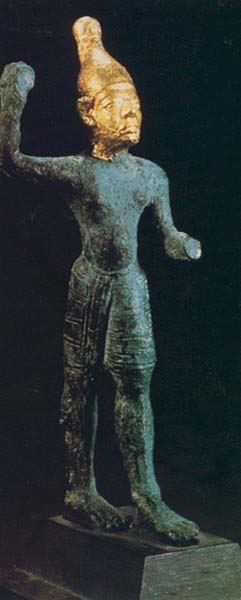Image Details

Lorenzo de Masi/Sites
Grim-visaged god raises his arm to cast a now-missing weapon. This figurine—variously identified as Baal or a weather god such as Resheph or Adad—is one of four small bronzes found together in a house in Ugarit. Gold foil still clings to the head and neck of the statuette, which measures less than five inches high.
Throughout the Late Bronze Age (1550–1200 B.C.) until its destruction in the early 12th century B.C., Ugarit was a thriving port city on the north Syrian coast. Ugarit controlled much of the lucrative trade between the eastern Mediterranean and inland Syria and Mesopotamia. Within the sphere of influence first of Egypt and then of the Hittites during its Late Bronze heyday, Ugarit shows the influence of both cultures. The headdress of the deity is modeled after the famed “white crown” of upper Egypt.
